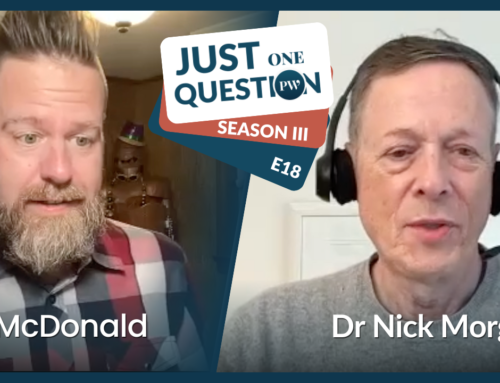This is the second installment in a three-part series adapted from my recent book, Can You Hear Me” How to Connect with People in a Virtual World. In the first part, I argued that the internet and the mobile phone have fundamentally changed the sales cycle. Your potential customer is further along the sales journey; she has already researched the possible options and the ratings of your company and your rivals. So, salespeople need to learn new techniques of selling, half in the real world and half in the virtual world, reading the customer quickly and ascertaining how to best connect. These requirements make listening, something that has always been important, essential in the virtual-real world.
Most salespeople pay lip service to the idea that they should listen to their clients, but far too few of them actually do. And they don’t listen in the right way. The smart ones listen for underlying messages more than superficial chit chat. The hard part to accept is that your customer’s needs always take priority, even over you getting to tell the good news about your favorite products. What emotion is the (potential) customer putting forward? Excitement about a new purchase? Fear about a new technology? Resistance to change? Resentment toward the old product? You must listen to all of this before you begin to talk about your offering.
The key word here is emotion. What’s memorable—and important to people—in communication is emotion; that’s what you should be listening for and responding to, not just the expressed content. Many salespeople are uncomfortable with precisely that. Talking about emotions can feel dangerous. But if you can acknowledge a client’s emotions and figure out an appropriate way to respond to them, you’ll be her favorite salesperson in no time.
How to get started? Begin by establishing a connection. That means being in the same networks as your clients. Before the Internet you had to go to the same church or country club. Now you need to be in the same social networks.
We want to feel that connection is real and strong enough to last through the after-sale (or repeat-sale) care, so don’t rush it or fake it. Connections between people get established at the surface first, but if they’re to be durable, then they must have emotional glue to hold them together.
All of that gets much harder to do well in the virtual world. Because we don’t know whom to trust online and our online trust relationships are more fragile than they are in person, we look to third-party endorsements to help us figure out which salespeople, whether of widgets or health care, are the trustworthy ones. Successful salespeople will invest heavily in online networks to begin to generate these third-connections and endorsements. They are the sales lifeblood of your new half-virtual, half-real existence.
This new mode of communication means that you need to market and advertise harder than ever in the virtual channels your customers frequent. But customers now own the sales cycle to a much greater extent. It is your job to wait until they are ready for the close—unless they signal to you that they do want help along the way.
To close a sale, you need to have established two things with your customer: credibility and trust. And it’s credibility first and trust second. Credibility comes first, because that’s what happens when you show that you understand the customer’s problem. Trust comes second, because that’s what you establish when you solve that problem. That’s even more true online than face-to-face. More on how you get those jobs done in the final installment of this three-part series.










Leave A Comment